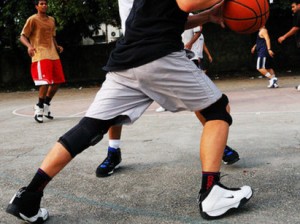12 Top Ingredients to Avoid in Personal Care Products | health care products victoria
The average personal care product contains about 12 chemicals: from shampoo and lotion to sunscreen and mouthwash. If you think there’s no cause for concern, think again, more than one-third of all personal-care products contain at least one ingredient linked to cancer, and less than 20 percent of the chemicals in personal-care products have been tested for safety.
12 Top Ingredients to Avoid in Personal Care Products:

- 12 Top Ingredients to Avoid in Personal Care Products
Prefixes – Ethyl, Methyl, Butyl or Propyl
What It Is: Parabens
Health Risks: Endocrine disrupters that mimic estrogen; linked to weight gain and breast cancer
Found In: Lotions and shampoos
Fragrance – DEHP, DHP, DBP 5, Dibutyl Phthalate
What It Is: Phthalates
Health Risks: Sperm damage, infertility
Found In: Nail polish, shampoo, deodorant, lotion
Dyes – Blue 1, Green 3, Yellow 5 & 6, Red 33
What It Is: Coal tar
Health Risks: Carcinogenic
Found In: Hair color, medicated shampoos
Triclosan, Chloro, Phenol, Irgasan
What It Is: Triclosan
Health Risks: Endocrine and thyroid disrupter; promotes antibiotic-resistant bacteria; bioaccumulates in the body
Found In: Antibacterial soap, shampoo, facial cleanser, toothpaste, deodorant
3-(4-methylbenzylidene)-camphor (4-MBC), octyl-methoxycinnamate (OMC), octyl-dimethyl-PABA (OD-PABA), bexophenome-3 (Bp-3), homosalate (HMS)
What It Is: Sunscreen chemicals
Health Risks: Estrogenic activity; enhances the potential for pesticides to penetrate the skin
Found In: Sunscreens
Polyethylene glycol (PEG, PPG, Cocoate), propylene glycol, polyoxyethylene, polyethoxyethylene, polyethoxyethylene mineral oil
What It Is: Petroleum byproducts
Health Risks: Carcinogen; liver and kidney effects
Found In: Lotions
Petrolatum
What It Is: Derivative of petroleum
Health Risks: Endocrine disrupter; carcinogen
Found In: Lotions
Lead acetate, thimerosal, mercurius solubilis, mercurius sublimates, mercurius corrosives, mercuric chloride
What It Is: Lead and mercury
Health Risks: Found in higher levels in women with breast cancer; neurotoxin
Found In: Hair color, wound treatments, artificial tears
Isobutene
What It Is: Propellant made from petroleum processing
Health Risks: Carcinogen
Found In: Moisturizer, shaving cream, foot spray, breath freshener
Placenta
What It Is: Placenta, placental enzymes, placental extract
Health Risks: Filled with hormones that upset your own balance and increase estrogen
Found In: Skin and hair conditioner
Hydroquinone
What It Is: Hydroquinone
Health Risks: Can cause a skin disease called ochronosis
Found In: Skin whitener
Nano zinc oxide <100mm
What It Is: Nanoparticles
Health Risks: The safety of nanoparticles has not been tested, but they can cross the blood/brain barrier and move along nerves.
Found In: Sunscreens, lotions
Many manufacturers list ingredients on product packaging and on their websites. Check the labels on your personal care products; if you see any of these 12 chemicals, it might be wise to limit the use of the product or to find a “organic” alternative.
Article highlights from Kelly Lerner and Alli Kingfisher; from Natural Home & Garden Magazine









